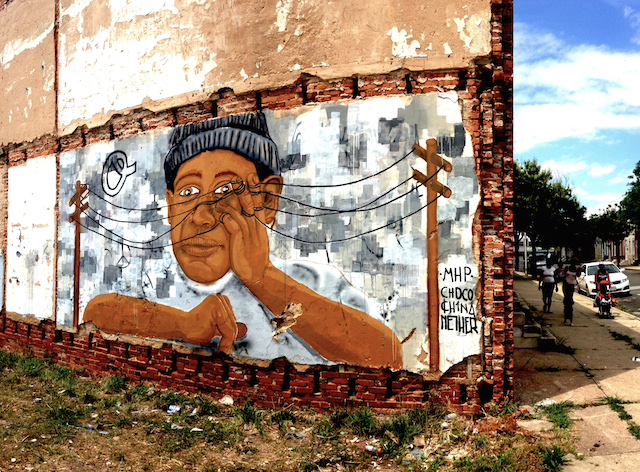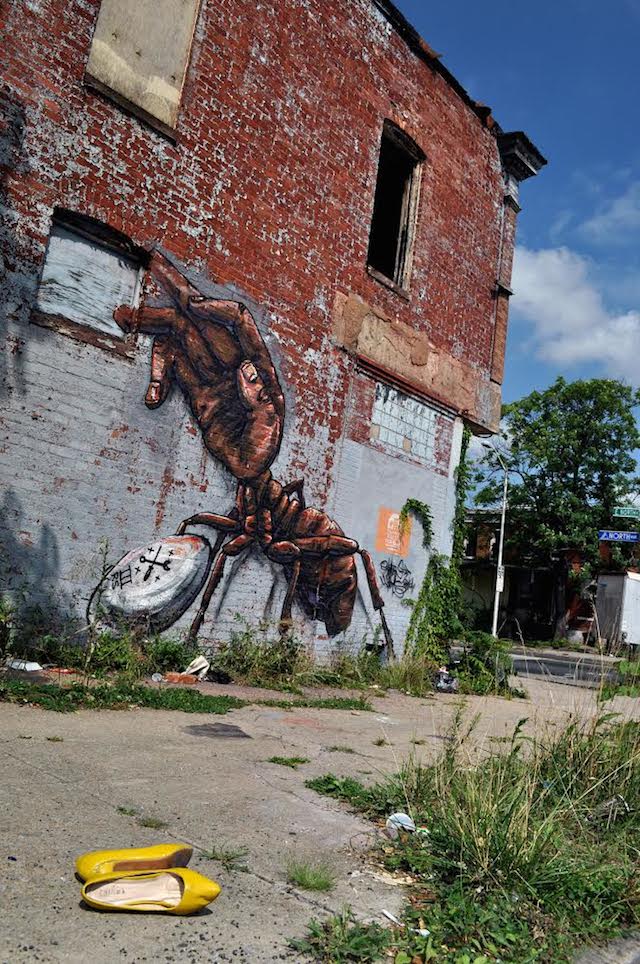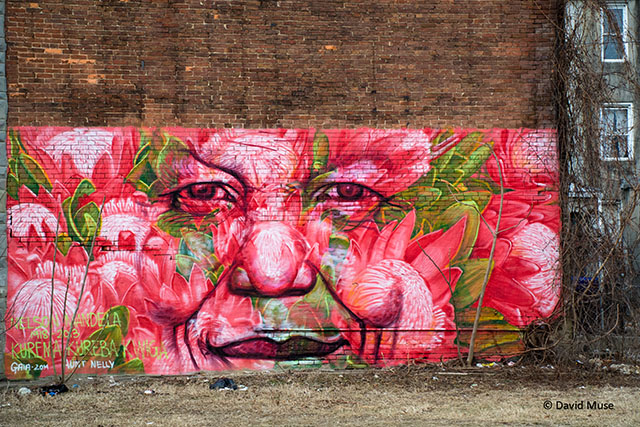
In Baltimore, where every water is uncharted, street art has navigated its own course. What began as a covert creative expression of artistic imagination by individual street artists has matured to become an important force that binds artists and neighborhoods. Baltimore’s growing legion of street artists has piloted a course of creating art on parched streets and using it to quench neighborhoods’ thirst for something beautiful and sometimes provocative in their midst.

When I began wheatpasting, there were only three other street artists in town who regularly got their pieces up: Ways, Gaia, and Nanook. Mata Ruda began wheatpasting about the same time I did and we worked together often. Everyone used a fly-by-night installation approach, using the cover of darkness to get our work up. Unsanctioned street art was something relatively new to Baltimore and the public viewed it as a sort of furtive “where’s waldo” game. We used the element of surprise to start the conversations that our work desired.

Everything changed in 2012. Under the direction of Gaia, Open Walls Baltimore began and with it the Station North neighborhood—Baltimore’s arts district—was transformed by the presence of spectacular, large murals funded by the National Endowment for the Arts and PNC Bank. With the arrival of the street art mural circuit to a city new to street art, Baltimore discovered street art’s ability to change an urban landscape. Most works didn’t deal with Baltimore politics and social issues directly but their presence acted to educate the public about the value of this new-to-it art form in giving voice to and beautifying our town. With Open Walls, Baltimore found a place on the map in the street art world. This place was solidified after the launch of Articulate by Stefan Ways in October 2012.
Continue reading “Below government radar, street artists discover the people’s permission”
